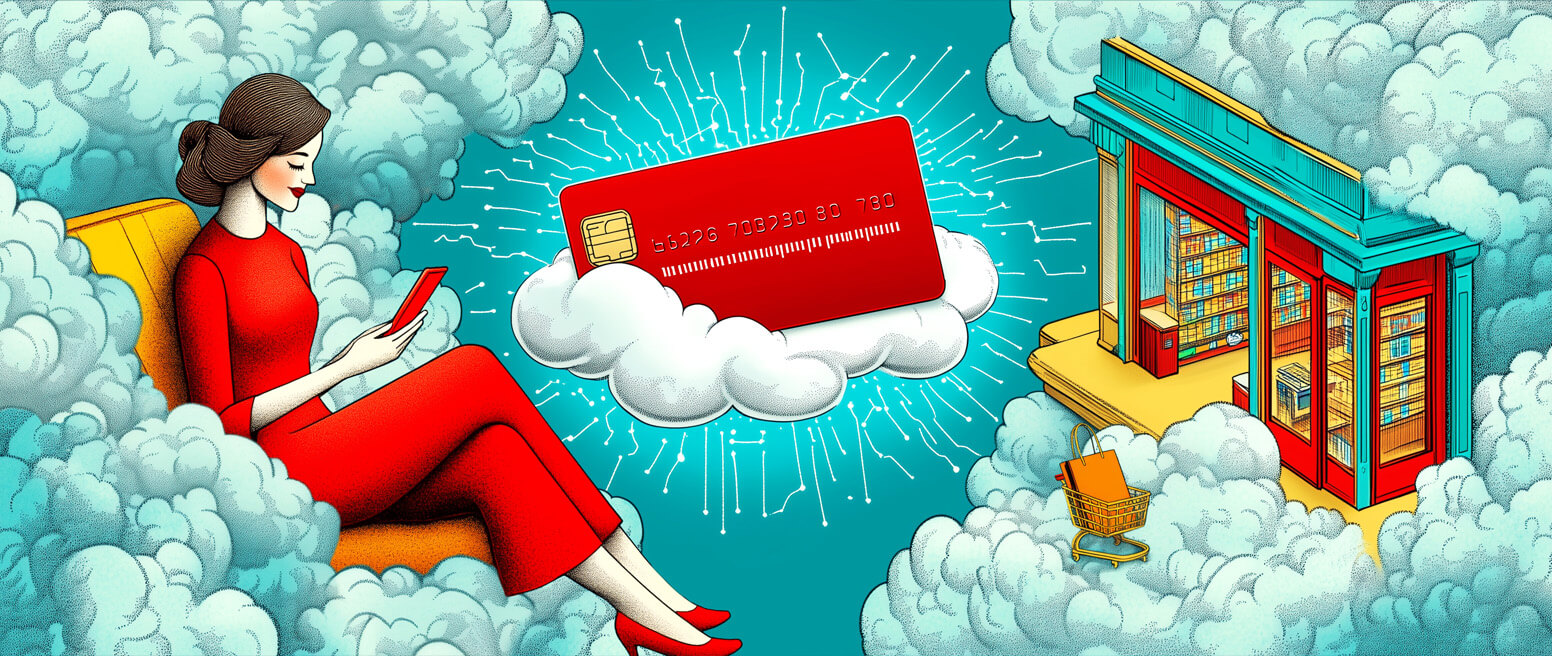What are Card-Not-Present Transactions? How They Work, Fees, & Best Practices
Last year, an estimated $6 trillion in credit and debit card transactions occurred without the card being physically present at the time of the purchase.
Card-not-present or CNP transactions are increasingly popular among all parties. They afford increased choice and convenience to buyers while introducing sellers to large markets with minimal overhead. Banks and card schemes also benefit from the fees and additional costs skimmed from each CNP sale.
Card-not-present transactions, however, introduce risks and are commonly targeted by fraudsters. The seemingly simple process of online shopping is supported by complex and creative solutions developed through decades of industry innovation.
Recommended reading
- What is Connective eCommerce?
- Top 15 Customer Returns Reasons in 2024 & How to Avoid Them
- Online Shopping vs In-Store Shopping: the Future of Retail?
- What is a Return Customer Rate? How to Calculate Your RCR
- Prime Day 2024: How to Avoid Chargebacks on the Big Day
- eCommerce Order Tracking: Provide the Best CX Possible
What Are Card-Not-Present (CNP) Transactions?
- Card-Not-Present Transaction
A card-not-present transaction is any payment card transaction in which the cardholder does not physically present the card in question to a merchant.
[noun]/kaard • nät • prez • unt • tran • zak • shn/
Like the term implies, card-not-present transactions are any purchases made without the use of a physical card. The payment card is not dipped or tapped at the point-of-sale (POS) terminal. Instead, the purchase is made remotely, usually via the internet, fax, or phone.
Common examples of CNP transactions include:
Examples of Card-Present Transactions:
Examples of Card-Present Transactions:
Comparing Card-Present & Card-Not-Present Transactions
A Card-Present (or “CP”) transaction occurs when a buyer taps, dips, or swipes their payment card at a point-of-sale terminal. CP transactions also include mobile wallet payments (e.g. Apple Pay, Google Pay, Samsung Pay, etc.) when a mobile device is tapped to make a contactless near field communication (NFC) payment.
CP transactions have several advantages over CNP transactions. For one, both the buyer and their payment method are physically present during a CP transaction. This makes them inherently more secure than a CNP transaction. Issuing banks impose lower fees on merchants when a CP transaction is used to complete a purchase, because there’s less risk involved.
Nonetheless, there are disadvantages. CP transactions require physical hardware that can be expensive to purchase and burdensome to maintain. Hardware failures and power outages can also hamper a merchant’s ability to accept CP transactions.
Plus, unlike their CNP counterparts, a card-present transaction requires the buyer and their payment card to be physically located at the POS. This limits a merchant’s buyer pool and eliminates their ability to serve customers who cannot visit a location in person.
How Does a CNP Transaction Work?
There are five steps in a CNP transaction: authorization, authentication, batching, clearing, and funding.
- Authorization
The first step occurs when the merchant requests information from the issuing bank. The issuer confirms that the cardholder’s account is valid and has sufficient funds. - Authentication
In the second step, the merchant uses anti-fraud technology to verify the cardholder’s identity and ensure that the transaction is legitimate. - Batching
In the third step, the merchant bundles a group of transactions, which are then submitted to the acquiring bank for processing. Batching makes repetitive tasks — like processing payments — less more efficient to do in bulk. - Clearing
Acquiring and issuing banks exchange banking details via a payment network, like Visa or Mastercard. Payment networks then determine how to best route and transmit funds. - Funding
Funds are transferred from the issuing bank to the acquiring bank. The acquiring bank then deposits funds into the merchant’s bank account.
Getting Started with CNP Transactions
Accepting credit cards requires a processor and a merchant account. However, depending on your product vertical, accepting card-not-present payments may force you to use a high-risk merchant account. This generally has more stipulations and higher costs.
It’s possible to bypass a traditional merchant account by going with a service provider like Stripe or Paypal. However, this option usually comes with its own set of limitations, including reports of lower reliability and limits to how much you can process in a given period.
If you’re just getting started with online selling, don’t expect a huge influx of sales right from the start. You could get lucky, but the average eCommerce conversion rate is right around 2%. Even huge sites like Amazon still get exponentially more visitors than buyers. That’s not inherently bad, just realistic.

But, let’s say you’re really looking for a “quick start” option. You want to get up and running as soon as possible. Here are a couple of options to consider:
Online Marketplaces
One way to get in the game is to set up as a marketplace seller. Major eCommerce sites like Amazon allow third-party sellers to operate on their platform, thereby eliminating some of the necessary costs you would have to bear up front. That said, be aware that this may come with its own challenges.
Learn more about marketplace sellingDropshipping
Dropshipping is another option. This lets you effectively white label products, and operate as a middleman between a buyer and another seller. You never have to worry about inventory, and it takes minimal effort and startup capital.
Learn more about dropshippingConnective Commerce
Going off of that last idea, so-called “connective” eCommerce is a holistic go-to-market strategy. It incorporates ideas from dropshipping to let new merchants launch a business with little up-front investment.
Learn more about connective eCommerceCNP Transaction Processing Fees
Like we talked about above, card-not-present transactions usually come with higher payment processing fees. This is because of the heightened risk of chargebacks and fraud associated with the CNP channel.
Some widely-used processors structure costs as a percentage of the transaction volume, plus a flat fee. For instance, a payment network may charge 2.2% + $0.15 for a CP transaction, but charge 2.9% + $0.30 for a CNP transaction. In this scenario, a $100 CP transaction would incur $2.35 in fees, while an equivalent CNP transaction would cost $3.20.
The following table is an example of how interchange fees break down across some of the largest card networks (as of this writing):
| Payment Network | Low Interchange Fee Range | High Interchange Fee Range |
| Visa | 1.15% + $0.05 | 3.15% + $0.10 |
| Mastercard | 1.25% + $0.05 | 3.15% + $0.10 |
| Discover | 1.45% + $0.05 | 3.05% + $0.10 |
| American Express | 1.35% + $0.10 | 3% + $0.10 |
CNP Transactions & Fraud Risk
Like we alluded to above, Card-not-present transactions involve more risk than card-present transactions. This is because the cardholder and their card are not physically present when a transaction is processed.
The presence of the cardholder and the payment card makes it easier for the merchant to verify the buyer’s identity, and make sure their payment information is legit. When neither the buyer nor the card are present, fraud risks — such as phishing, identity theft, triangulation fraud, and credit card theft — are heightened.
Source: Clearly Payments
Of course, this is not to say that CP transactions are necessarily immune from fraud. Card skimming, counterfeit cards, card theft, and other fraud risks plague the CP space. Relatively speaking, however, CNP transactions are more fraud-prone than their CP counterparts.
Best Practices for CNP Transactions
Reduce Risk & Optimize for CNP Success
It pays to be proactive about anticipating card-not-present challenges. Here are a few things you can do:
#1 | Get All The Information
One of the easiest ways to protect yourself is to properly process CNP sales. The first step is gathering the right customer information for every transaction. This includes:
- Full name (as shown on card)
- Phone number(s)
- Email address
- Billing address
- Shipping address
- Full card number and expiration date
- CVV security code
#2 | Use Available Tools
It’s hard to verify your buyer’s identity if you never come face-to-face with them. However, cardholder validation tools such as Address Verification Services (AVS) and 3-D Secure can help ensure your buyer is actually the authorized cardholder.
Learn more about fraud prevention#3 | Keep Excellent Records
Organize and file orders, payments, correspondence, and customer details on every transaction. Inconsistencies may help identify fraud. Even if a chargeback is filed, something in your notes could help to disprove the bogus claim.
Learn more about fighting chargebacks#4 | Optimize Conversion
Take steps to segment “good” and “bad” points of friction in your customer experience. You want to keep the former in place, while eliminating bad friction points whenever possible.
Learn more about optimizing conversion#5 | Understand Seasonal Patterns
Business probably won’t be steady throughout the entire year. Consumer behavior changes over time. So, be sure that you’re familiar with predictable patterns of consumer behavior, like seasonal shopping patterns.
Learn more about holiday shopping patterns#6 | Optimize Shipping & Fulfillment
You can’t forget about what happens after the transaction. You have to ensure that you are taking all necessary steps to provide great customer service through the order fulfillment process.
Learn more about shipping & fulfillmentClosing Thoughts
There’s no doubt that accepting card-not-present transactions are profitable. Still, there are risks. You can mitigate some of that risk, but you can’t prevent problems in every case.
That’s where the right chargeback management plan can be invaluable. If you’d like help putting one in place, contact us today. We can perform a free ROI analysis to demonstrate the benefits of the right prevention and risk-mitigation strategy.
FAQs
How does a card-not-present transaction work?
A card-not-present (CNP) transaction occurs when neither the buyer nor their payment card are present at the point of sale (POS) where a purchase is completed. eCommerce merchants and online vendors frequently encounter card-not-present transactions.
What does it mean when your card is not present?
When your card is not present during a transaction, you do not physically swipe, dip, tap your card at the payment terminal, nor do you use your mobile device to make a contactless near field communication (NFC) payment to complete the transaction.
What is the difference between card-not-present and card-present fees?
Card-not-present (CNP) transactions generally have higher fees than card-present (CP) transactions. This is because CNP transactions are associated with a higher risk of chargebacks and fraud than CP payments, which make them costlier and riskier to process.
Is CVV required for card-not-present?
No, not all merchants require CVV for card-not-present (CNP) transactions. However, requiring CVV numbers can help deter and prevent CNP fraud, and it is considered best practice for merchants to require them.
Is Apple Pay considered a card present transaction?
If Apple Pay is used to complete a transaction that is physically present at the point-of-sale (POS), then it would be considered a card-present (CP) transaction. If Apple Pay is used on a phone that is not at the POS (e.g. Apple Pay is used to order groceries or merchandise on an app), then it would be considered a card-not-present (CNP) transaction.
Can I pay online without CVV?
On occasion, yes. Some online merchants do not require CVV numbers when paying online. However, industry best practices support the use of CVV numbers, so more online merchants are requiring their use.














